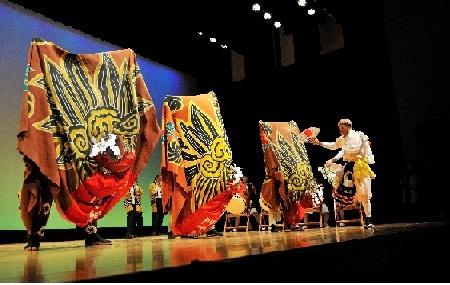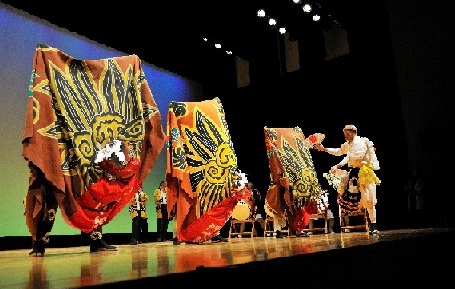
| Pseudonym reading | Kado Nagumi Trauma |
|---|---|
| Specified type | Prefecture designation |
| Type | Intangible folk cultural property |
| Designated date | April 5, 2013 |
| Specified details | |
| quantity | |
| location | Ofunato City Suesakicho |
| owner | |
| Holding group | Monchu Group Promotion Association |
| Management organization | |
| home page | Monzuru Toramai |
Overview
The Monkumi Toramai was created by a master of tiger dance called Sasaki Gogoro who lived in Nakai, Ofunato-shi Suesaki-cho, in the Meiji Era, and completed the original tiger dance with acrobatic character with the conventional content. Although it is a thing, in relation to the lion head (possibly considered to have been produced during the period of the north-south morning to the Muromachi period) transmitted to the Nakamori Kumano Shrine that sits in the local Tomari district, an interesting origin is being described.
During the Kamakura period, a ship carrying a shrine, a bowl and a Buddhist costume on Tomari Beach in Suesaki was full of musical tones. The locals were surprised and suspicious, but later built the shrine and scolded the rituals and bodies. At Nakamori Kumano Shrine, many treasures were transmitted, and the lion head is one of them. Because it was thought that if the dedication of the lion dance at the festival, good harvest and good fishing would be fulfilled, Kamenohama and Nakai's sons and sons take the type of lion head and inherit the name to the tiger dance to the present. .
The tiger dance widely distributed in the coastal area of Iwate Prefecture can be divided into several lines, but the tiger dance distributed in the former Sendai Bandai area in the prefecture south is generally considered to be a change in the lion dance, In many cases, it is intended to be devils and fire-bushings, and costumes and dumplings are similar to gong-myeon distributed in many of the city of Ofunato.
In addition, Monkumiumi tiger dance with tradition that it is begun to look around the lion head which goes to the Nakamori Kumano Shrine from the north-south morning-Muromachi period now suggests that the tiger dance is derived from the folk religion for the lion head There is.
image

